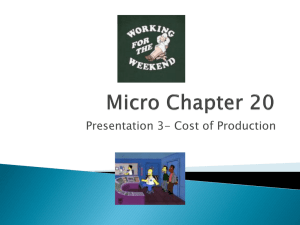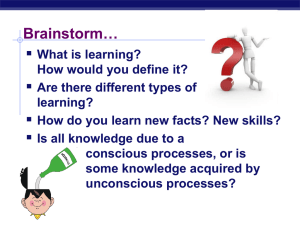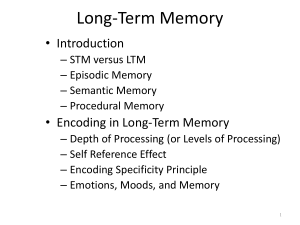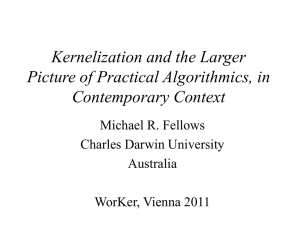Slides
advertisement
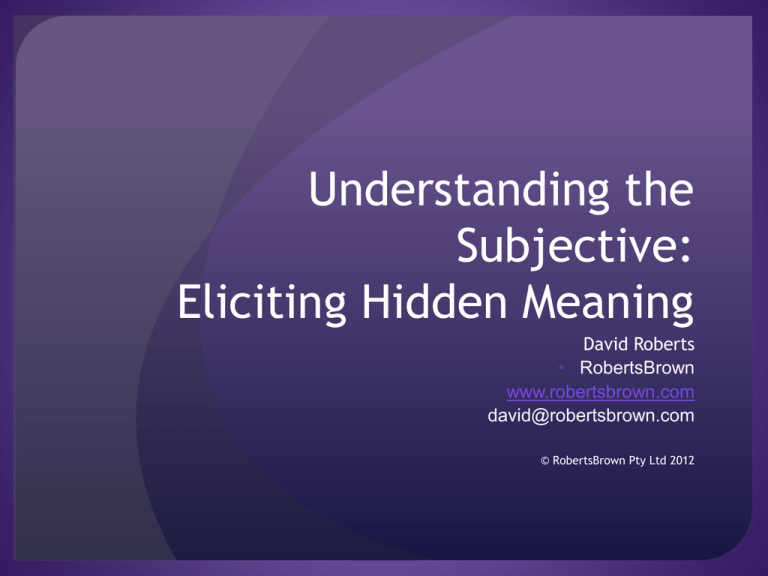
Understanding the Subjective: Eliciting Hidden Meaning David Roberts • RobertsBrown www.robertsbrown.com david@robertsbrown.com © RobertsBrown Pty Ltd 2012 Introduction Talk about some research into how projective techniques work Projective techniques In 1949 Haire borrowed projective techniques from psychology What people were SAYing in response to questions was different from what they DID Wide range of techniques Vignettes Drawing pictures Association Photo-elicitation Used for 25 years because they work Why is it so? Why do projective techniques work? How can we assess the value of data provided by research interviews? Cognitive science and phenomenology provide some clues Behaviour is automatic Behaviour and thinking is predominantly automatic – Very little of our thinking is explicit Rely on mental shortcuts Variety of names: “System 1”, “Scripts” ‘Schema’ because it has the longest history and broadest application Test if schema present Test the idea that schemata operate in interviews Preliminary Research Used a projective technique that requires schema If not there - nowhere Methods Methods Eight cognitive interviews with experienced evaluators Two parts: ‘Originating’ interview Cognitive debrief Originating Interview Photo-Elicitation (aka TAT) Shown array of photo portraits Choose & Describe Asked to choose “best” commissioner “worst” Describe Person Behaviour when receive report Cognitive debrief Short break Video reviewed together Participant asked to explain what they were thinking Results Selection of photographs Selections made very quickly Sometimes took a while to pick up photo but choices made early Some variance across participants including one photo being chosen as both ‘best’ and ‘worst’ Explanation of Selections Explained in terms of specific attributes of the photograph Man behind the desk = ‘computer a barrier’, ‘busy’, ‘not paying attention to the report’ Woman in the park = ‘informal’ ‘away from distractions’, ‘I felt a connection’ ‘Very attractive’ Selections based on salient experiences frequent strong emotional impact recent Descriptions Resistance to ‘stereotyping’ but still described the ‘person’ represented Picked up photograph Referred back to fine details in the photograph Discussion Implicit Knowledge First instant of selection responded to an array of 16 photos enormous detail Could not be consciously aware of all details Different and sometimes opposing selections Judgements were intuitive based on personal knowledge implicit knowledge NOT some shared understanding Subjective Expression In the selection phase no explicit information Asking them to express a subjective understanding Typification Not a specific person but their understanding of a type ‘type’ of person ‘They’ (Schutz 1970) or ‘generalised other Used a typification so they could respond ‘Doing’ is ‘Now’ Responding is before explicit thinking Mead’s ‘pre-suppositional’ Schutz’s ‘pre-phenomenal’ knowledge Kahnemann ‘System1’ Responding is ‘Doing’ NOW HERE What we DO may be different in other situations Schema Has all the characteristics of schema thinking Identified a ‘type’ very quickly (seconds) Identification based on very little information and sometimes vey subtle cues (posture, situation, etc.) Used implicit knowledge (subjective perceptions) to select photos of a ‘type’ of person Implicit knowledge based on generalised experience Descriptions Looked at the photos to find details that support their descriptions Constructed explicit description in the interview (Brockmeier 2010 ; Knoblauch & Schnettler 2012) Explicit knowledge varies with context Subjective v Objectified Two different ways of thinking within these interviews ‘expressing’ = subjective responses ‘talking about’ = conscious reflection on ‘They’ Talking about => objects for reflection Can ‘Talk about’ self (Mead’s ‘Me’) ‘We’ (Jenkins et al 2010; Schutz 1944) ‘Thou’ Nature of data? What is the nature & value of such data Participants asked to ‘talk about’ ‘They’ Tells us nothing about those people Tells us how participants perceive ‘They’ in the interview Conclusion Selections made in photo-elicitation uses implicit knowledge – specifically a schema Elaboration – explicit knowledge - occurs after the selection and starts from that implicit knowledge Different systems of thinking at different parts of the interview Need to understand how the answers generated before can understand how to analyse the data.


